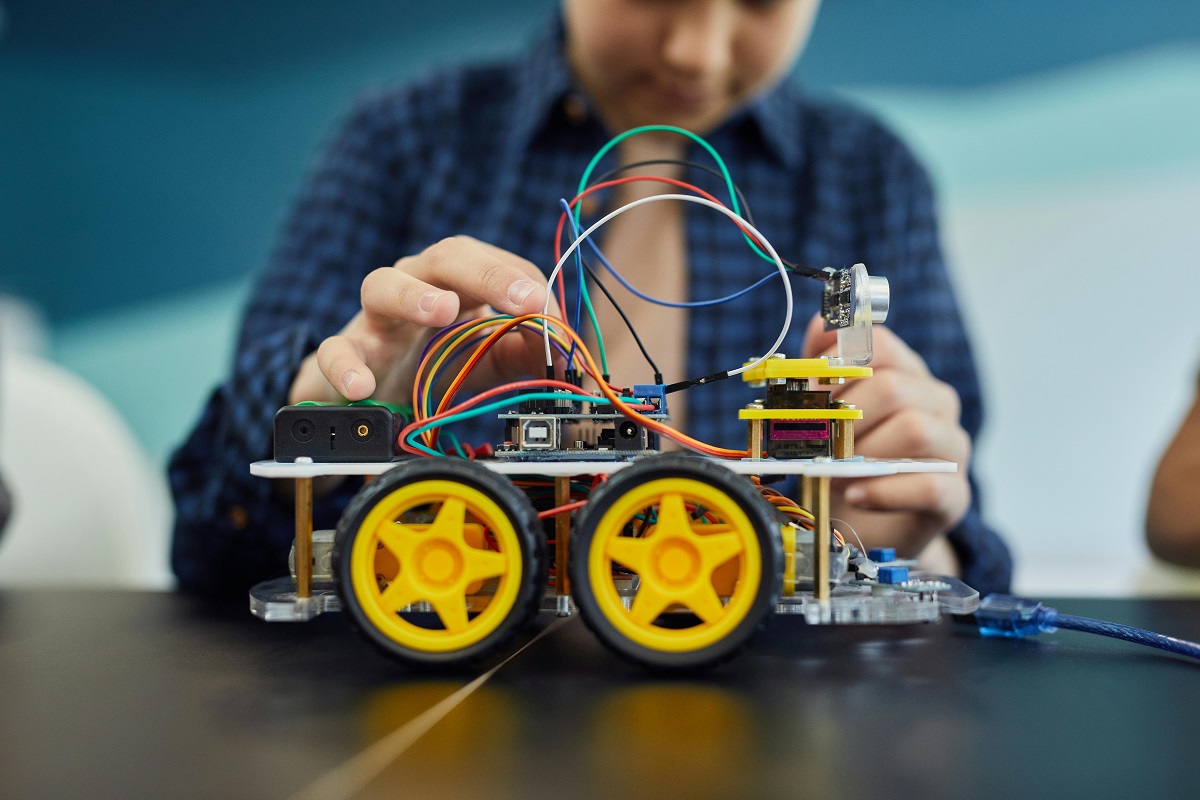STEM vs STEAM: Is One Really Better for Your Child’s Education?
As a parent, you want to give your child the best possible tools for success—especially when it comes to education. You’ve likely heard the terms STEM and STEAM tossed around by schools, programs, and enrichment centers. But what exactly do they mean? And more importantly, which one will help your child learn better?
This guide will break down the core differences between STEM and STEAM, explore the benefits and challenges of each, and help you decide which path is the best fit for your child’s needs and future.
What Is STEM?
STEM stands for Science, Technology, Engineering, and Math. It’s an educational approach that focuses on developing critical thinking, problem-solving, and analytical skills through structured, logic-based learning.
STEM education often emphasizes:
- Hands-on experiments and labs
- Coding and robotics
- Engineering challenges and mathematical modeling
- Data analysis and structured problem solving
The goal of STEM is to prepare students for careers in high-demand fields such as computer science, engineering, biotechnology, and data analytics.
What Is STEAM?
STEAM takes the STEM model and adds one important element: Art. That turns it into Science, Technology, Engineering, Art, and Math. This approach encourages creativity alongside technical knowledge.
STEAM education integrates:
- Visual and performing arts
- Design thinking and creative problem-solving
- Artistic expression in scientific and engineering projects
- Collaboration across creative and technical fields
The goal of STEAM is to produce well-rounded thinkers who can innovate by merging technical skills with creativity and design.
Why the “A” Matters in STEAM

Some educators and researchers argue that adding Art to the STEM framework creates more adaptable, innovative students. Creativity isn’t just for painters and musicians—it’s essential for engineers designing products, scientists communicating results, and developers building user-friendly tech.
Key advantages of adding Art include:
- Encouraging out-of-the-box thinking
- Supporting emotional expression and social connection
- Strengthening communication and storytelling
- Providing alternative ways to engage with STEM concepts
For example, a STEAM approach to building a robot might include designing the robot’s appearance and story, not just programming its movement. This engages more learning styles and helps students connect emotionally with the work.
STEM vs STEAM: What Are the Key Differences?
| Aspect | STEM | STEAM |
| Focus | Technical mastery, logic, analysis | Creativity + technical integration |
| Skills Developed | Critical thinking, math, coding | Innovation, empathy, visual expression |
| Subjects Emphasized | Science, tech, engineering, math | Adds visual/performing arts to STEM |
| Learning Style | Structured and logical | Cross-disciplinary and exploratory |
| Career Focus | Engineering, tech, data | Design, innovation, creative tech |
How Do Kids Learn Differently in STEM vs STEAM?
Every child has a unique learning style. Some thrive on structure and logic, while others flourish when given creative freedom. Understanding how your child learns best is key to choosing the right approach.
STEM works well for kids who:
- Enjoy solving puzzles, equations, and logic games
- Gravitate toward computers, building toys, or science kits
- Like structured activities and measurable outcomes
- Prefer concrete tasks with clear answers
STEAM is ideal for kids who:
- Love drawing, storytelling, music, or drama
- Are imaginative and come up with unusual ideas
- Thrive in open-ended tasks or group brainstorming
- Prefer learning by doing and creating
Neither approach is better universally—it’s about fit. For example, a child who struggles with math may still engage with STEAM through art-based explorations of mathematical patterns, while a detail-oriented child may excel in traditional STEM labs.
Does One Lead to Better Academic Performance?
There’s growing evidence that both STEM and STEAM approaches can lead to improved academic outcomes—when implemented thoughtfully and with strong instructional support. However, the benefits they offer often differ in scope and timing.
STEM outcomes often include:
- Higher performance in standardized math and science assessments
- Stronger development of logical and analytical reasoning
- More direct preparation for careers in technology, engineering, and scientific research
These results are especially evident in structured, STEM-focused programs. For instance, a U.S.-based study comparing STEM and non-STEM high schools found that students enrolled in STEM programs demonstrated significantly stronger outcomes in mathematics on standardized exams. This supports the idea that STEM curricula tend to produce quicker academic gains in technical subjects.
STEAM outcomes tend to emphasize:
- Greater student engagement and intrinsic motivation
- Improved problem-solving in open-ended or real-world contexts
- Enhanced communication, collaboration, and creative thinking skills
The long-term benefits of STEAM were substantiated by a South Korean study that followed students who had experienced STEAM education in their earlier years. These students reported deeper confidence in their ability to tackle complex, interdisciplinary challenges, as well as sustained interest in science and engineering fields—suggesting that STEAM may foster longer-lasting retention and real-world readiness.
Which is more effective?
In short, STEM programs may offer faster academic gains in technical subjects, especially when measured by test performance. STEAM programs, on the other hand, may cultivate more well-rounded learners, equipping students with both cognitive and creative tools that support lifelong learning and adaptability.
How Does STEM vs STEAM Impact Early Childhood Development?
The benefits of both STEM and STEAM can be seen even in preschool and early elementary years. At this age, children are naturally curious and imaginative—making it the perfect time to introduce hands-on exploration and creative problem-solving.
STEM in early years:
- Encourages observation and experimentation (e.g., planting seeds, using magnets)
- Develops basic logic and sequencing (e.g., pattern blocks, simple coding toys)
- Builds confidence in numbers and measurement
STEAM in early years:
- Promotes fine motor skills and sensory learning through painting and crafts
- Strengthens language development with storytelling and role-playing
- Fosters emotional intelligence through collaborative, imaginative play
The takeaway: A blended approach in early education introduces key STEM concepts while supporting emotional and creative development. Many early learning centers are now using STEAM-based play to prepare young learners for more advanced STEM later on.
Which One Prepares Kids Better for Future Careers?

The future of work is changing. Many high-paying jobs now require both technical skills and creativity.
According to the World Economic Forum, the most in-demand future skills include:
- Analytical thinking
- Complex problem solving
- Creativity and originality
- Emotional intelligence
- Collaboration
STEM programs tend to build strong foundations in analytical and technical skills, making them excellent for traditional roles like engineers, programmers, and scientists.
STEAM programs build both technical skills and soft skills, which are essential in emerging careers such as:
- UX/UI design
- Creative technology
- Green innovation and sustainability
- AI ethics and human-centered engineering
If your child wants to pursue a job that doesn’t exist yet, STEAM may offer more flexibility and creative grounding.
What Do Teachers and Educators Say?
Educators have mixed—but thoughtful—views on the STEM vs STEAM debate. Many argue that STEAM helps reach more students, especially those who might feel intimidated by traditional math and science tracks.
Others caution that Art shouldn’t water down core STEM learning, especially in already time-strapped school systems.
What they agree on:
- Integrating arts can boost engagement
- Students benefit from real-world applications of STEM
- Educators need more training and support to implement STEAM effectively
What Should Parents Look for in a Program?
Whether you’re choosing a school, an after-school club, or a summer program, here are some questions to guide your decision:
Ask about:
- Curriculum structure: Are art and design integrated or optional?
- Learning outcomes: How are creativity and technical skills assessed?
- Project-based learning: Are students building, creating, and collaborating?
- Teacher training: Are instructors equipped to teach both STEM and STEAM?
- Student interests: Does the program match your child’s natural talents and curiosity?
How Are Schools and Programs Integrating STEM and STEAM Today?
Today’s classrooms are evolving, and many are moving away from siloed subjects toward project-based, integrated learning. Rather than choosing STEM or STEAM outright, some schools blend both approaches.
Examples of how programs integrate both:
- A science unit on the solar system includes a math-based scale model, a written planet report, and a creative space-themed art installation
- Robotics clubs that focus on coding logic as well as aesthetic design for competitions
- Engineering projects that solve real-world problems, paired with presentations or digital storytelling about the solution
Parents should ask how schools structure these opportunities. Are projects cross-curricular? Do students have chances to use both analytical and artistic skills? Programs that intentionally mix structure with creativity can offer the best of both worlds.
Can You Combine STEM and STEAM at Home?
Absolutely. You don’t have to choose one or the other—many families create hybrid learning environments at home.
Easy STEM + STEAM activities to try:
- Build a catapult from popsicle sticks, then decorate it with a theme (engineering + design)
- Use a coding app to create a simple game with a storyline (technology + storytelling)
- Study geometric patterns and recreate them in art (math + visual art)
- Create an experiment to test water filtration, then present the results in a video (science + communication)
STEAM isn’t about replacing STEM—it’s about enriching it.
STEM vs STEAM: Which One Is Right for Your Child?
There’s no one-size-fits-all answer. The best choice depends on your child’s interests, learning style, and future goals.
Choose STEM if:
- Your child prefers structured tasks with clear logic
- They’re interested in pure sciences or math-heavy fields
- You want a strong academic focus on technical mastery
Choose STEAM if:
- Your child is creative and imaginative
- They enjoy storytelling, art, or building things from scratch
- You want a more holistic, balanced learning experience
Or choose both:
Many schools and programs now blend STEM and STEAM to offer well-rounded education, combining the rigor of science and math with the power of creativity.
Final Thoughts
In the debate of STEM vs STEAM, the question isn’t which one is objectively better—but which one helps your child learn better. Both approaches offer powerful tools for success in school, life, and work.
As a parent, the best thing you can do is stay involved, observe how your child learns, and advocate for educational experiences that challenge, inspire, and empower them.
Whether your child is coding their first robot or designing an eco-friendly cityscape, they’re learning to think, solve, and create—and that’s what really matters.
